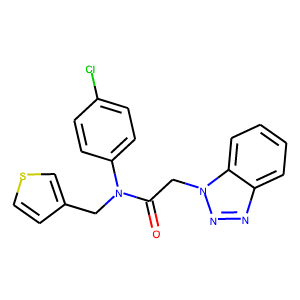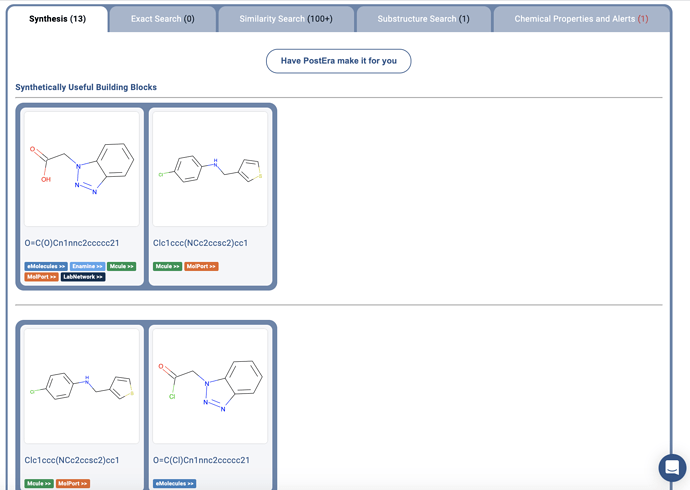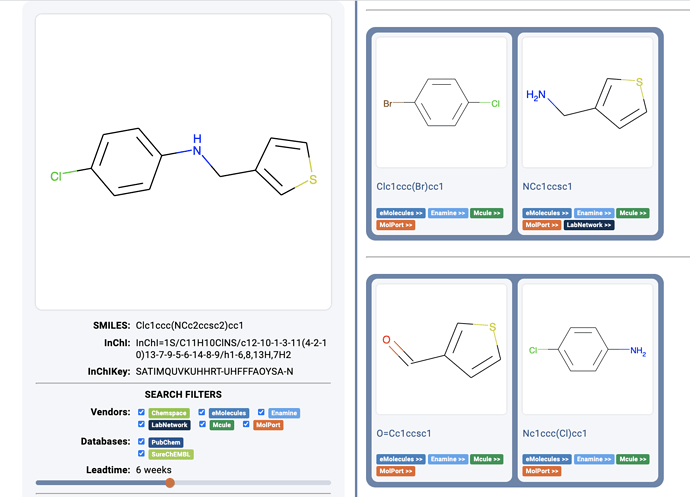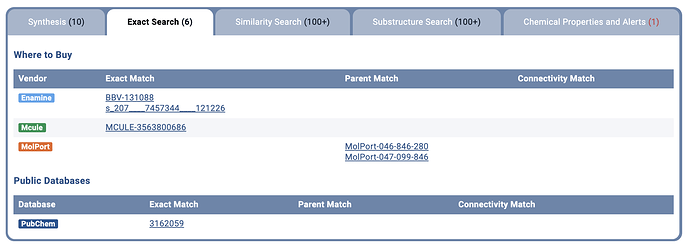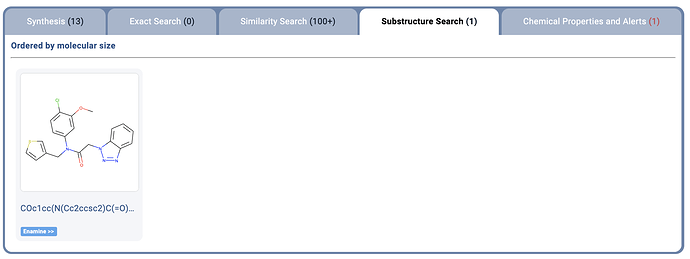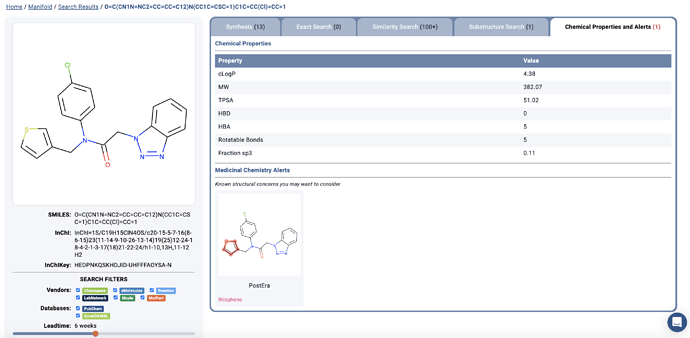Looking for building blocks takes a lot of time – and it isn’t exactly fun. However, it is really important.
Most chemists would prefer pondering creative synthetic routes to complex molecules. And while many chemists hold a staggering number of Named reactions in their heads, it is simply impossible to memorize the millions of building blocks available off the shelf.
Yet finding the right building blocks allows you to design faster, more robust synthetic routes. And in medicinal chemistry, availability of building blocks may also heavily inform design decisions – particularly early on in hit expansion. That’s partly why we built Manifold – to aid with this process. The days of connecting back to the most basic building blocks in organic chemistry classes is over – use the synthetic complexity that you can buy!
An example molecule
Here’s a molecule that was designed for the COVID Moonshot project as a potential MPro inhibitor
When asked to think about the synthesis of the molecule, a few things might immediately pop into a chemist’s head (these are not purely imagined ideas, but from giving this question to a few chemists).
“An amide bond, I can cut there.”
“To make that secondary amine, perhaps you can buy the thiophene amine and then do an SNAr like reaction to attack the chlorobenzene.”
“Maybe I can make the benzotriazole acid from bromoacetic acid.”
“I wonder if the thiophene aldehyde is availble.”
…and many other ideas. The next thing to do is often quite a few substructure or exact searches of the inventories of different vendors who you work with, then come up with a route once you know what is available. You just hope you found the best building blocks.
Manifold is meant to take away all that hassle. We help you find the best building blocks for your molecule. And if it looks like your molecule will be hard to make, we help you to find similar molecules that are easy to purchase.
Using Manifold
To start, I can either draw or paste the SMILES for PET-UNK-b75fdf9f-1 into the drawing tool:
Now, I simply press “Search” on the page and, I am taken to the details page, which will show me “Synthetically Useful Building Blocks”
As you can see, the benzotriazole acid is actually widely available from multiple vendors, while the secondary amine is also itself available. One might wonder if that secondary amine is really off the shelf or made-to-order, or you might wonder how to make it yourself. You can find all of this out by clicking on the building block’s image!
On the building block’s own details page, you can see that it can indeed be made using the available aldehyde, and you can also see where to directly purchase the secondary amine.
We can now head back to page for the original molecule we searched PET-UNK-b75fdf9f-1. Even though, it’s one robust synthetic step, maybe you are wondering if there is a molecule you can order to test the same medicinal chemistry hypothesis.
Simply go to “Similarity Search” or “Substructure Search” to see other molecules that you might just purchase cheaply.
And to see if the molecule is even worth purchasing, you can always look at the predicted chemical properties and any potential “medicinal chemistry alerts” that may concern you. Of course, these are just alerts, and should be treated as such.
With all of this info, we avoided having to do several different searches and going to a few different websites to find all of the info returned by this one search. We hope it also saves you a lot of time in your own searching!
And please let us know if there are ways you think we can make the tool better!
